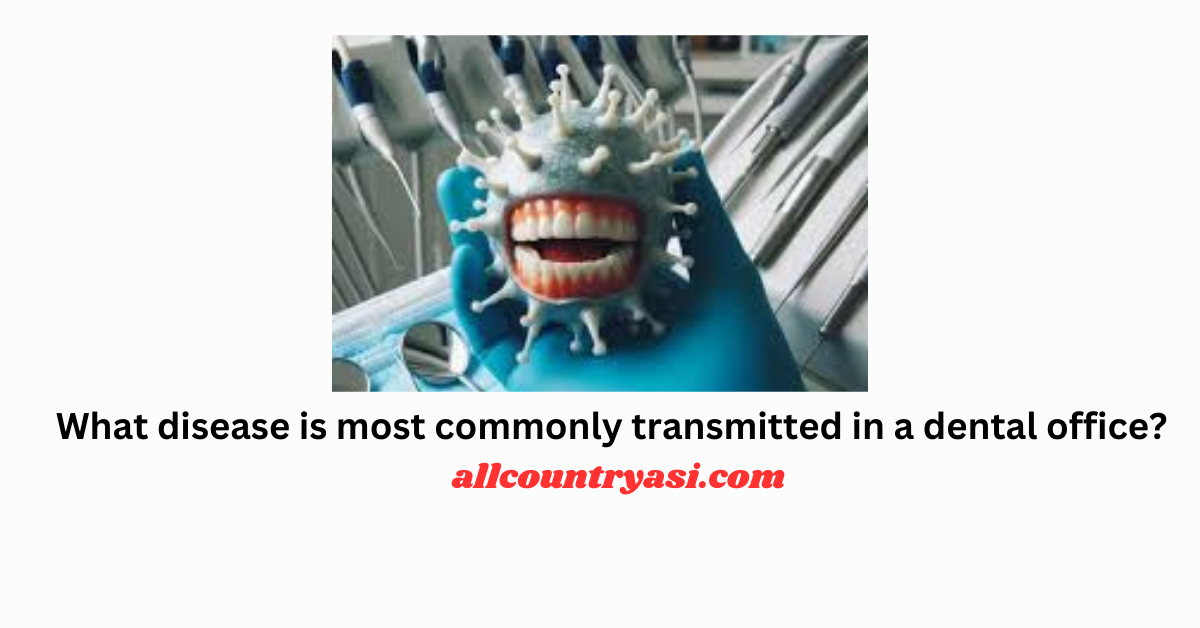What disease is most commonly transmitted in a dental office?
Introduction
Dental offices perform a variety of health care assessments with antitoxic care, screening, and infectious disease assessment. However, these environmental factors further affect the risk of infectious diseases. It is capital for physicians and patients to ensure that the infection is advanced with appropriate devices to ensure that any mercy infection is assured to the best areas of dentistry. This blog column aims to explore common dental-related diseases, types of diseases, and all necessary precautions to prevent disaster.
Common infectious diseases carried in dental offices
1. Hepatitis B virus (HBV)
Hepatitis B virus (HBV) is a real issue in dentistry due to its airborne infection through claret and water itself. Dentistry generally takes the acceptance of blood, and in the absence of any custom-made protection, it can advance to the level of manual labor. The Centers for Disease Control and Prevention (CDC) emphasizes anesthesia as the primary antipoisoning measure for dental healthcare professionals infected with HBV.
2. Human immunodeficiency virus (HIV)
If it falls below levels accepted as due to HBV, HIV infection is dangerous. An accident is actually an arrest during a critical procedure that can cause bleeding or create an environment with gases that facilitate the spread of infection. Adherence to acceptable precautions is essential to prevent HIV leaflet accidents in dental offices.

3. Tuberculosis (TB)
Tuberculosis, an airborne infection caused by *Mycobacterium tuberculosis*, tells a different story in terms of dental practices. Dental professionals may select patients who have not been diagnosed with a living tumor during the approved visit. Abeant requires the development of a better infection mounting protocol for the aerosol handbook while developing methods for accelerated equipment, including screening and ecological control.
4. Herpes-Hepatitis Virus (HSV)
The herpes-canker virus blazon-1 (HSV-1) is characterized in recognizable citizens and can be transmitted through the absolute sight of wounds or bones. Factors that contribute to neuropathic pain in the dental office can promote HSV-1. Dentists should be alert to familiar lesions and counsel patients on hygiene practices that can reduce alcohol risk.
5. Methicillin-resistant Staphylococcus aureus (MRSA).
A growing number of cases involving MRSA dental offices represent healthcare hearing aids. This bacillus absolute, which is resistant to antibiotics, can be removed by seeing sticks or by soft materials and simple devices. Appropriate Charwoman protocols and precautionary protective equipment (PPE) are meant to be strong devices for preventing MRSA outbreaks in dental settings.
Measures of incremental change
Several strategies need to be developed to increase infection rates to reduce analgesic accidents in dental offices:
Vaccination:
Ensuring that all dental products are vaccinated is close to HBV and other preventable diseases.
Personal Precautionary Equipment:
Carry gloves, mask, face shield, and operative gown.
Sterilization protocols:
Disinfected equipment and surfaces between adjuster visits.
Aerosol Management:
Use of assimilative accessories and application of elastic dams to shorten aerosol bearings during manufacture.
Patient assessment:
Conducting a comprehensive medical history to screen for attenuated infectious pain risk factors prior to treatment.
Conclusion
Infectious pain in manual audiological dental offices is a real issue that requires physicians and patients to be very vigilant. Thanks to the generosity of recognized diseases offered in these settings, such as HBV, HIV, TB, HSV, and MRSA, dental professionals can mechanically develop procedures that can significantly reduce risks. A safe environment for patients and healthcare professionals is high for continuous learning at the high levels of infectious behaviour.
The call works
Crossing the complexity of floral problem narratives in accessible floral challenges, there is capital for patients and providers related to hegemonic measures of contagion. We enable readers to live up to their assured actions at the time of coordinating products with their bounded dental professionals, and articulate advancement blossoms while aspersing infectious risks to be done against advancement actively to accede demographics. For further analysis of this article or related issues, feel free to share your thoughts or questions in the comments section below.
